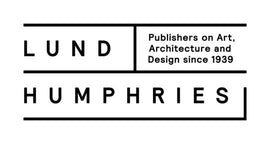Book of the Week: Whitechapel at War: Isaac Rosenberg and his Circle
‘Art is not a plaything’, wrote painter-poet Isaac Rosenberg in 1912. He was by all accounts a serious, sensitive young man. When Rosenberg was first introduced in 1911 to the group of East End writers and artists known as the ‘Whitechapel Boys’, aspiring writer Joseph Leftwich described him as ‘depressingly self-absorbed … he did not smile once all that first evening’.
Rosenberg’s many self-portraits are similarly unsmiling, the artist directing his intense gaze on his own reflection. They are paintings about the self, and it’s not hard to understand how this inward-looking painter turned to poetry. But it was in art that he first found an outlet for his creativity, his artistic leanings providing a temporary escape route from the squalor of the Jewish immigrant ‘ghetto’ in Stepney to the bohemian Slade School of Fine Art, sponsored by wealthy patrons and later by the Jewish Educational Aid Society. Between October 1911 and March 1914, Rosenberg joined a circle of Slade students engaged in the debate between Modernism and tradition, which included Mark Gertler, David Bomberg, Stanley and Gilbert Spencer, Jacob Kramer, C.R.W. Nevinson and William Roberts.
A photograph on page 44 of Whitechapel at War, my Book of the Week, shows students and teachers relaxing in 1912 at the Slade picnic, Nevinson, Gertler and Roberts all sporting the trademark bohemian Trilby. Rosenberg crouches on the left-hand side, slightly apart from the group. It seems now like a poignantly innocent scene: six years later, Rosenberg was dead, and the lives and work of his contemporaries were forever changed by the experience of war.
But it was in the trenches of the First World War, unable to paint, that Rosenberg wrote his finest poetry. Jean Moorcroft Wilson, Rosenberg’s biographer, writes in Whitechapel at War that a crucial part of Rosenberg’s greatness and originality as a poet ‘sprang from the painter’s vision he brought to bear on his poetry’. Poems often emerged from initial sketches: in ‘The Troop Ship’ (1916), written either during a crossing or shortly after arrival at Le Havre, the sketched moment is captured, distilled and enriched in the poem, which emphasises the unnatural and ‘grotesque’ nature of war.
Next week, in a special event for Jewish Book Week, biographer Jean Moorcroft Wilson will take part in ‘Reading Siegfried Sassoon and Isaac Rosenberg 100 Years On’, which includes performances of selected poems by London secondary-school students. The haunting voice of an extraordinary and neglected artist and poet, who disappeared at the Front shortly before the end of the War, will be heard once again.
Lucy Myers, Managing Director
Whitechapel at War: Isaac Rosenberg and his Circle by Rachel Dickson, Jean Liddiard, Sarah MacDougall, Jean Moorcroft Wilson and Dominic Williams. Published by Ben Uri Gallery, July 2009, distributed by Lund Humphries. ISBN 978-0-900157-09-7. Hardback, 280 x 240 mm, 144 pages, includes 90 colour and 15 b&w illustrations. £40.00/$80.00


